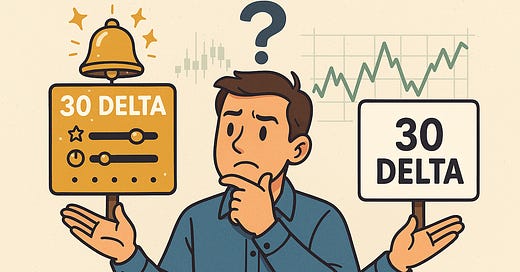The only point of taking more risk is to make more money.
I love “trading”, but it’s expensive in both time and transaction costs, and creates as many ways for things to go wrong as it does right. “Keep calm and SPY on” is good advice.
It’s hard to deny the thrill of a transaction though. Gaming the spread, fishing mid-market for someone to bite on your cheeky bid - that’s fun. While there’s the pain of whiffing when you get just a little too cute, there’s also a disproportionate amount of pride that comes from saving a few pennies.
It’s kind of like speeding - an analogy I made several weeks ago when talking about using leverage. There’s a thrill from moving just a little too fast. I suspect most drivers are doing it for that reason, as the marginal time savings are exponentially and inversely proportional to distance. (You can save meaningful time over long journeys, but no matter how fast you go locally the stop signs and other road hazards are just too impactful for the math to work.)
With risk in financial markets, there’s even less of a reason to enjoy it for its own sake. Have fun in the play account, YOLO some DOGE, that’s fine. But when you want to turn up the heat on serious investments, you have to look carefully at what you’re getting, and what it’s going to cost you.
The leverage example focused on the high level of a strategy that creates synthetic long stock using a risk reversal. By selling a put and buying a call - both struck at 15 deltas - you have the same exposure as 30 shares of stock. The delta replaces your equity exposure, but also comes with an additional premium.
Short OTM puts and long OTM calls gives you exposure to the skew risk premium. Puts are priced over calls at the same delta because of the spot:vol correlation, and higher expected volatility as stocks move down. Rather than just being long the equity risk premium via 30 shares of stock, short kurtosis adds a dimension of volatility risk premium.
As we detailed in Speeding on Leverage, there are a number of mechanics to this trade. We must rebalance deltas if there’s a sharp move, but also as time passes. There’s at least a trade every week to adjust, and sometimes additional delta hedges in between. Beyond just the downside risk, there are a lot of transactions and transaction costs.
This week in Backtest Notebooks, we’ll review the results of this strategy, and ask the question - is it worth it?
Keep reading with a 7-day free trial
Subscribe to The Till to keep reading this post and get 7 days of free access to the full post archives.




